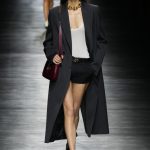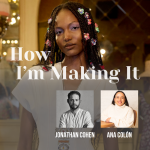“My mom told me that if I opened a store and didn’t have my name somewhere inside, she would kill me,” designer Tanya Taylor says of the walnut logo welcoming shoppers into the second room of her first-ever store.
Located on Madison Avenue — New York’s new-again shopping destination — Taylor’s first retail outpost sits across from Gabriela Hearst, between Vince and the Gagosian Gallery, just a stone’s throw from The Mark and The Carlyle Hotels on the Upper East Side.
“I was reluctant about the Upper East Side,” she admits. “I live downtown and I’m such a downtown girl. I always would shop in Soho. Then, the more time I spent up here, the more I realized that this shopper is the most savvy and the most active. There are people that come in every day… I wanted that kind of consistency, of the same person coming in and really teaching us about product. This neighborhood feels like it’s always going to be busy.”
The brand worked with Jessica Hyland of Hyland Studio (who also designed the Khaite store downtown and the Alison Lou one uptown) on making the 1,400-square-foot space — which was a model apartment for Douglas Elliman for 25 years — its own.
“It was a blank slate,” she says. “I like discovering zones. I love that someone would turn the corner and have a moment that feels featured, of a piece in one of the nooks. They can see art, and it feels like there’s movement. I don’t know what to do with myself as a customer in one big space. I feel like there’s intimacy in breaking it up.”
Photo: Sharon Radisch/Courtesy of Tanya Taylor
As Taylor describes it, there are three spaces: a first room that’s light, bright and airy, inviting people in; a second one that feels more stylized, like someone’s (very cool, artful) apartment; and a third that’s intimate and warm, but welcoming, where the changing rooms are. The feel you get in each one plays into how they’re merchandized.
“That’s been the most fun, thinking about all of the pieces living in one space,” says Taylor. “We’ve mostly been through specialty stores and (places like) Saks, where you get a selection. It’s like, how do you tell the color stories?”
The first room is all about texture, she explains, where the second one will focus on color and special categories, such as swim or evening. There are also a handful of products (think new colorways of already-beloved styles) that are exclusive to the store. (Also, the brand stocks its full size range, of 0 through 22 or XS to 3X.)
“Outerwear is something that we haven’t traditionally sold through other retailers that much, so it’s nice to test it here,” Taylor says. “Our team has an instinct on what we hope everyone wants to buy each season; at the end of the buying period, if we missed out on some of our favorites, we get behind them, between e-comm and even partnering with some of our stores… And it usually does sell because there’s some kind of a momentum behind it.”
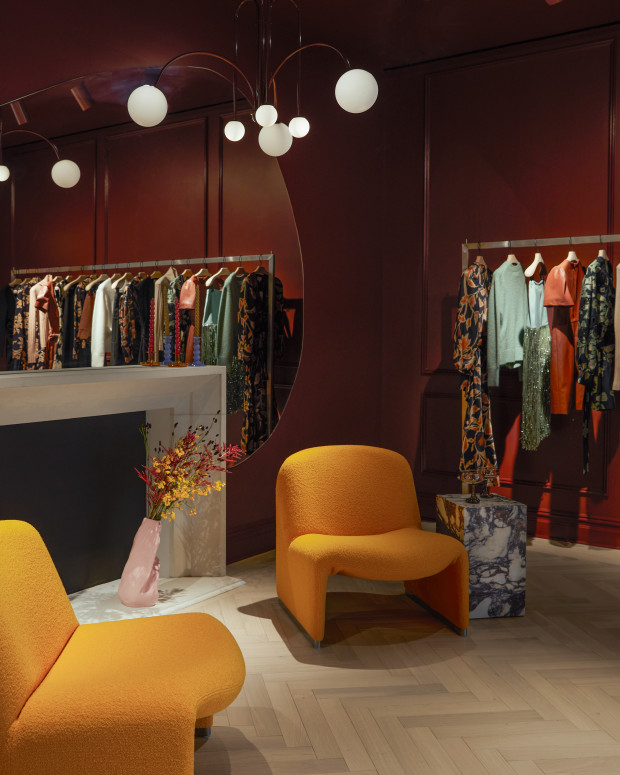
Photo: Sharon Radisch/Courtesy of Tanya Taylor
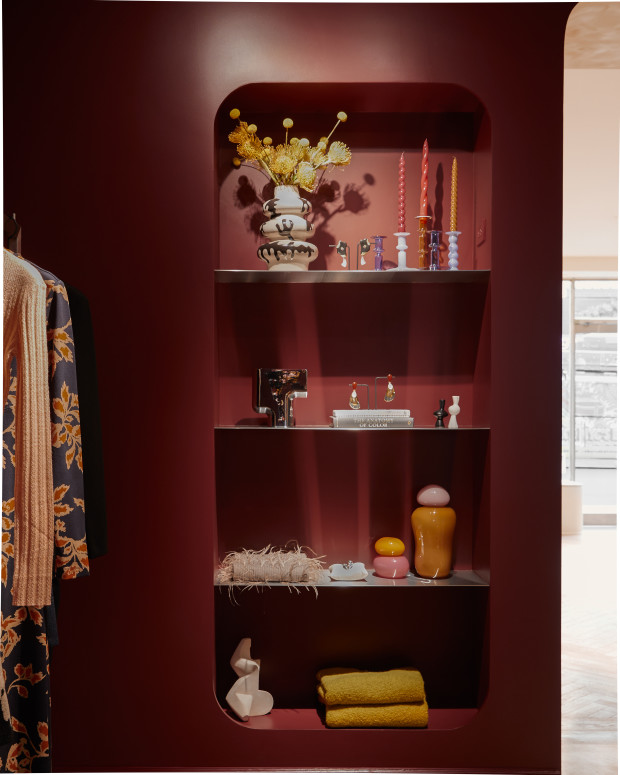
Photo: Sharon Radisch/Courtesy of Tanya Taylor
Even in the first few days of the store being open, the designer’s been surprised by some of the product that’s been moving. The sequined skirt and sweater styled on the window has been a hit, for one.
“I was like, ‘I wonder if that’s going to be too forward or hard for someone to understand… I sold three sets of these yesterday. I feel like people are ready for fall. Knitwear selling feels exciting.”
Throughout the store, shoppers will also find customized design elements built into the space that tell different parts of the Tanya Taylor story — like floral wall carvings in the same pattern as one of the first prints she painted for Michelle Obama, hand-carved wood accents on the hang bars and special paint colors made by Farrow & Ball (the same company that recently unveiled a collaboration with Christopher John Rogers, Taylor’s former intern).
“It’s fun to be so specific about things for the first time and tell someone a story through furniture you like, which we’ve never been able to do,” she says. “I wanted there to be a really nice moment of pieces that are continuous on one rack and then have some more discoverable elements.”
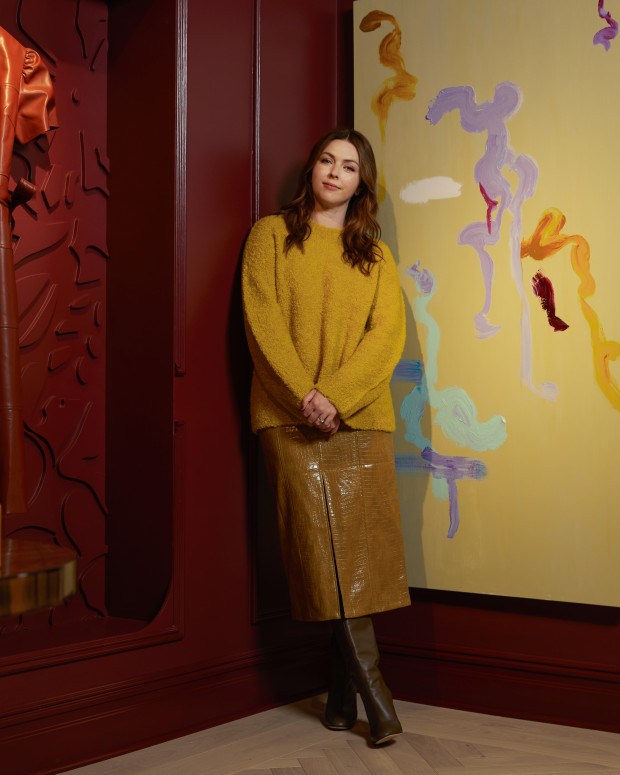
Photo: Sharon Radisch/Courtesy of Tanya Taylor
“I went to a ton of stores in London last summer, and I kept feeling inspired by how they brought in residential elements, of moldings or couches in cool corners,” she continues. “I understood the importance of warmth and of a space that feels inviting and approachable, that also feels private — where someone might be in the back trying things on and not everyone can see them, not everyone is bothering them. Then, finding ways someone can do what they’re in the mood for: If it’s sitting there and reading a newsletter or talking to our team… That’s how we want this to feel, not like a scary fashion store.”
Having a space also allows Taylor to showcase the work of her friends in the industry and of people she admires. There’s jewelry from Monica Sordo, Agmes and Khiry; home goods from Espelma, Helle Mardahl and Hay.
“We’ve used a lot of these brands in our lookbooks,” she says. “I just thought of it from a customer’s point of view: If I was walking in, what do I want to discover? Do I want to see things on mannequins, or do I want to see them hanging off of weird artful vases? It’s a little bit more of a creative play, how we introduce jewelry and home goods, so that customers see the creativity that we have selling them. It’s not so serious… I keep thinking how this can speak to a customer that’s coming in for maybe a gift or someone who’s not into buying clothing, but it feels like it fits the lifestyle of the brand.”
Some of Taylor’s own purchases are on display, such as a pair of yellow Giancarlo Piretti chairs from the ’80s that she won by bidding on 1stDibs, and a pink vintage cabinet she bought off of Jenna Lyons on Instagram (“before we even had a lease,” she says).
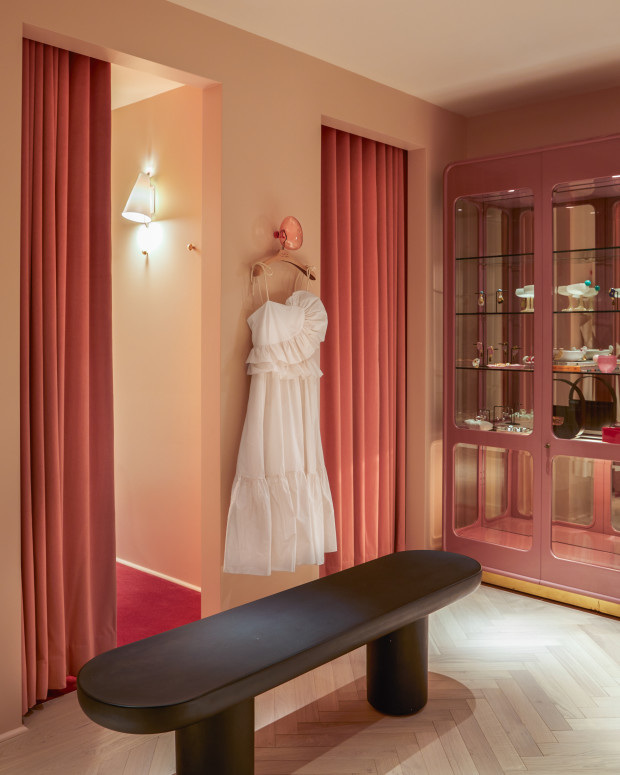
Photo: Sharon Radisch/Courtesy of Tanya Taylor
Bringing people into the space is a big part of opening the store. Taylor might bring her painting series to Madison, and host events with authors and the designers behind some of the brands sold there. It could also be new space for the brand’s philanthropic partnerships with Memorial Sloan Kettering Cancer Center and Publicolor, and for reaching customers that might not get invited to fashion events normally.
“I want this to feel like there’s a community that’s supporting us and we’re supporting them,” Taylor says.
980 Madison Avenue is a big step for the brand, which celebrated 10 years in 2022. According to Taylor, the timing couldn’t be better.
“We’ve put so much effort into design and product, and we’ve really figured out who our customer is,” she says. “I’ve traveled so much in the last year — 12 cities in the U.S. for trunk shows and selling events with some of our specialty stores — and I love being in a change room. I love having critical feedback from somebody so that when I’m designing, I’m remembering that they like when a sleeve’s a little shorter or when the volume’s looking this way. A store gives us that permanently.”
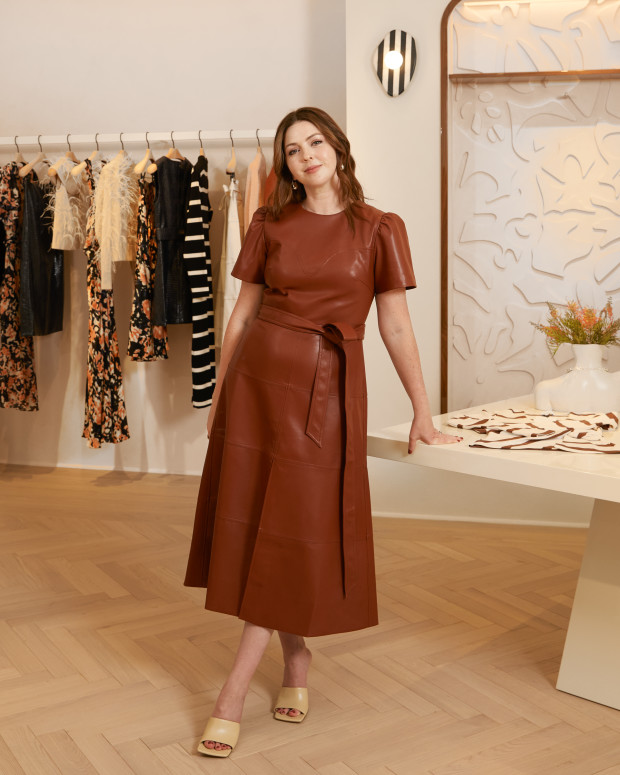
Photo: Sharon Radisch/Courtesy of Tanya Taylor
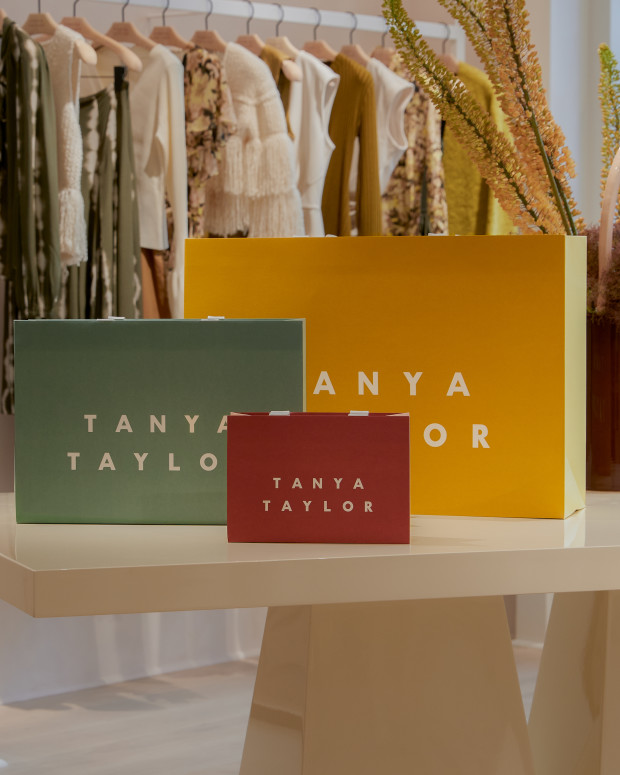
Photo: Sharon Radisch/Courtesy of Tanya Taylor
New York’s the focus for now, but Taylor’s already thinking about what the future might hold, brick-and-mortar-wise.
“I feel like I’m a four-to-five store kind of gal,” she says. “I don’t need 30 — I like four in different markets. I like Texas, I like Florida, I like New York and I like Toronto. Those are the spots that I’d be so excited to have, because they’re such different customers, and Toronto’s like my home base that I would feel really excited to go home to and be with family and friends.”
Never miss the latest fashion industry news. Sign up for the Fashionista daily newsletter.

